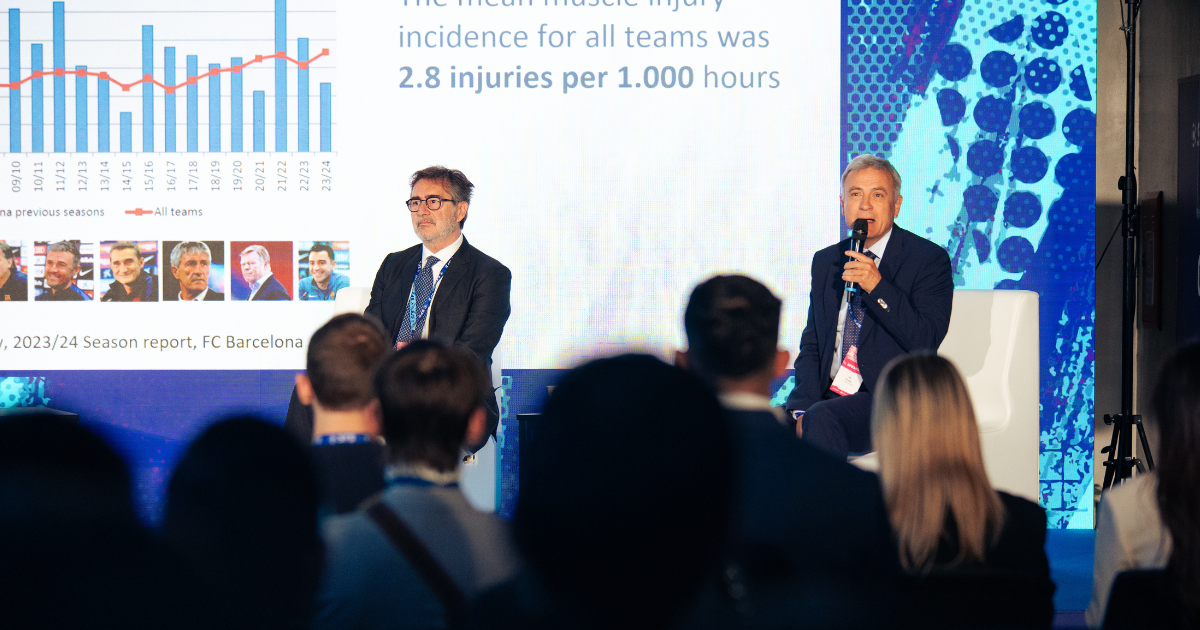
Injury Prevention in Sports: Isokinetic and FC Barcelona Share Insights at SFS 25
Sports medicine opened Day 2 on the Global Stage at SFS 25 with a high-level panel featuring Fabrizio Tencone, Sports Medicine Physician at the Isokinetic Medical Group, and Gil Rodas, MD, PhD, Head of Sport Medicine and the Medical Area at FC Barcelona, moderated by Carolina Tha.
Injuries remain one of the biggest and most persistent challenges in sports. Tencone presented a long-term study carried out by Isokinetic: “Eight years ago, we expected injuries to increase significantly. Today’s data shows that the rise is real, but smaller than originally predicted.”
Using a dedicated chart, Tencone highlighted three key points about major injuries:
- an athlete is not guaranteed to return to their previous level after an injury;
- injuries come at a very high financial cost for clubs;
- teams with fewer injuries tend to perform better.
This, he explained, is why sports medicine must be treated as a strategic priority. Gil Rodas brought in FC Barcelona’s perspective: “Injuries don’t happen because of the doctors. They mostly happen because of the training loads and methods chosen by coaches. Data shows that in certain seasons, depending on the way teams work, muscle injuries increase significantly.”
To address this issue, Barcelona is developing digital player avatars—advanced tools designed to predict potential injuries and personalize training loads for each athlete. The core of modern sports medicine is prevention. Tencone clarified what recent research has revealed:
“We used to think that reducing training loads would reduce injuries. That’s not true. You need to train harder, but also train smarter. And players don’t always move perfectly. Biomechanical errors must be studied and corrected, because they are often the root cause of injuries.”
Despite scientific progress, injuries continue to rise. According to Rodas, there are two main reasons: “Players compete with much higher intensity and density than in the past. Playing every three days causes micro muscle injuries that, without at least 72 hours of recovery, worsen over time.”
Rodas closed with a message for the future: “If we want to enjoy the talent of top players, we need to take care of them in every possible way.”



